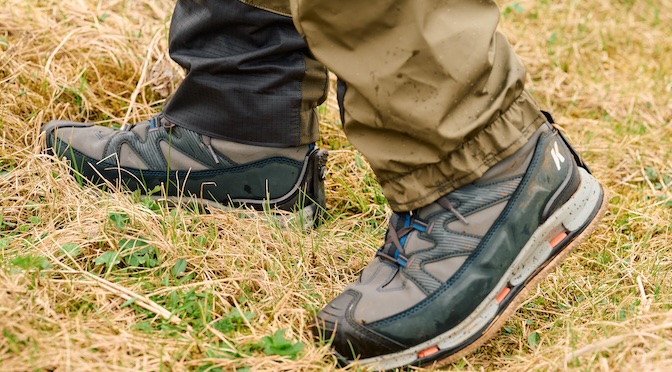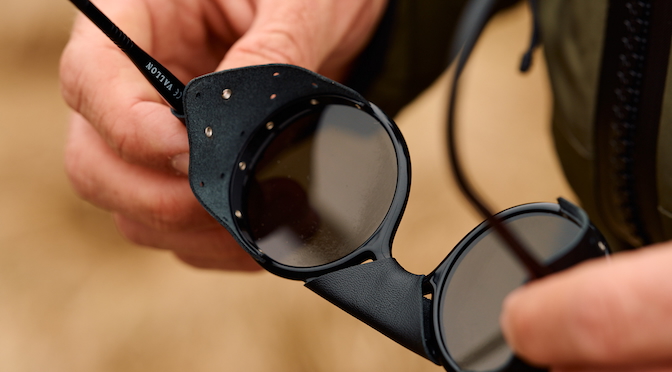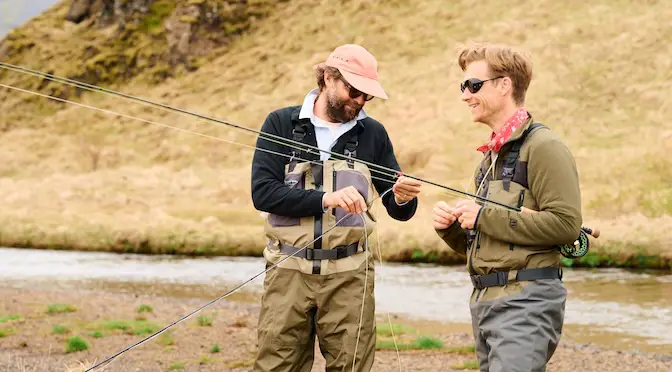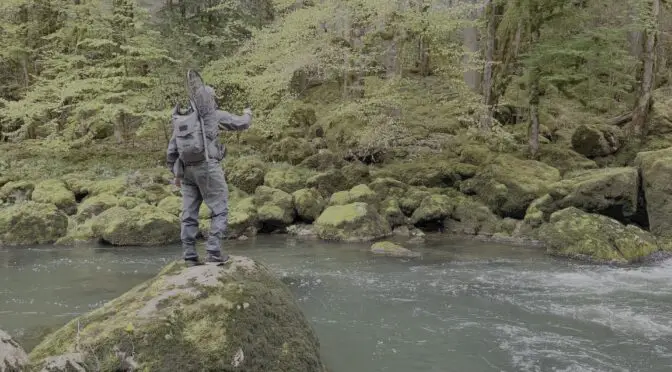Last updated on January 11th, 2024.
- Fly fishing nymphs: a neon underwater shocker - May 7, 2019
- Sand Eel Fly: A Simple and Effective Pattern - September 1, 2018
- Pike Flies: Effective Patterns for Predators - May 24, 2018
Fly fishing for predators like pike, perch or pike-perch has become increasingly popular. Rainer Ballin has been there from the beginning and shares his favourite pike flies.
Here is his step-by-step tutorial to tie a simple, yet very effective pike fly.
Synthetic Jerkfly
List of materials:
4/0 Partridge – Predator Hook or Gamakatsu Wormhook 36 (6/0,
4/0 or 2/0)70lb FC or mono cord
Niklaus Bauer Fluorescent 3D Eyes in 9mm, Flydressing
6/0 Dyneema Powerthread, Wolfgang Fabisch Fly Fishing
Different synthetic material:
Dyckers Fibers hard and soft, Dyckers or Enrico Puglisi EP
SoliTip Volume Fiber
Slinky Fibre, Baitfish blend or similar, H2O
Twisted Flash, H2O
Flash Dubbing, SoliTip
Superglue and superglue gel (Würth, Pattex)
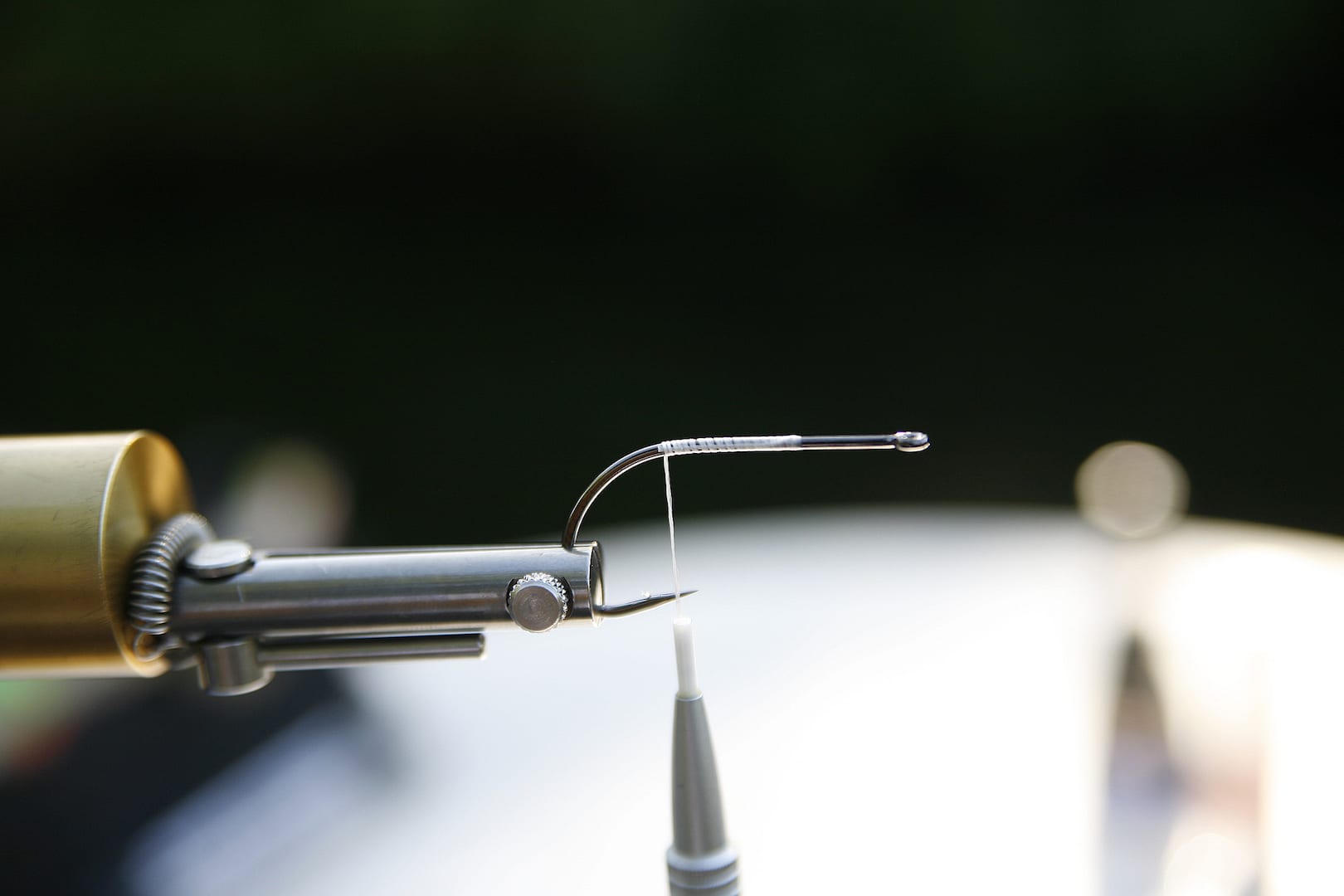
Step 1:
The thread is placed on the shank of the hook, approx. 1/3 behind the eye.
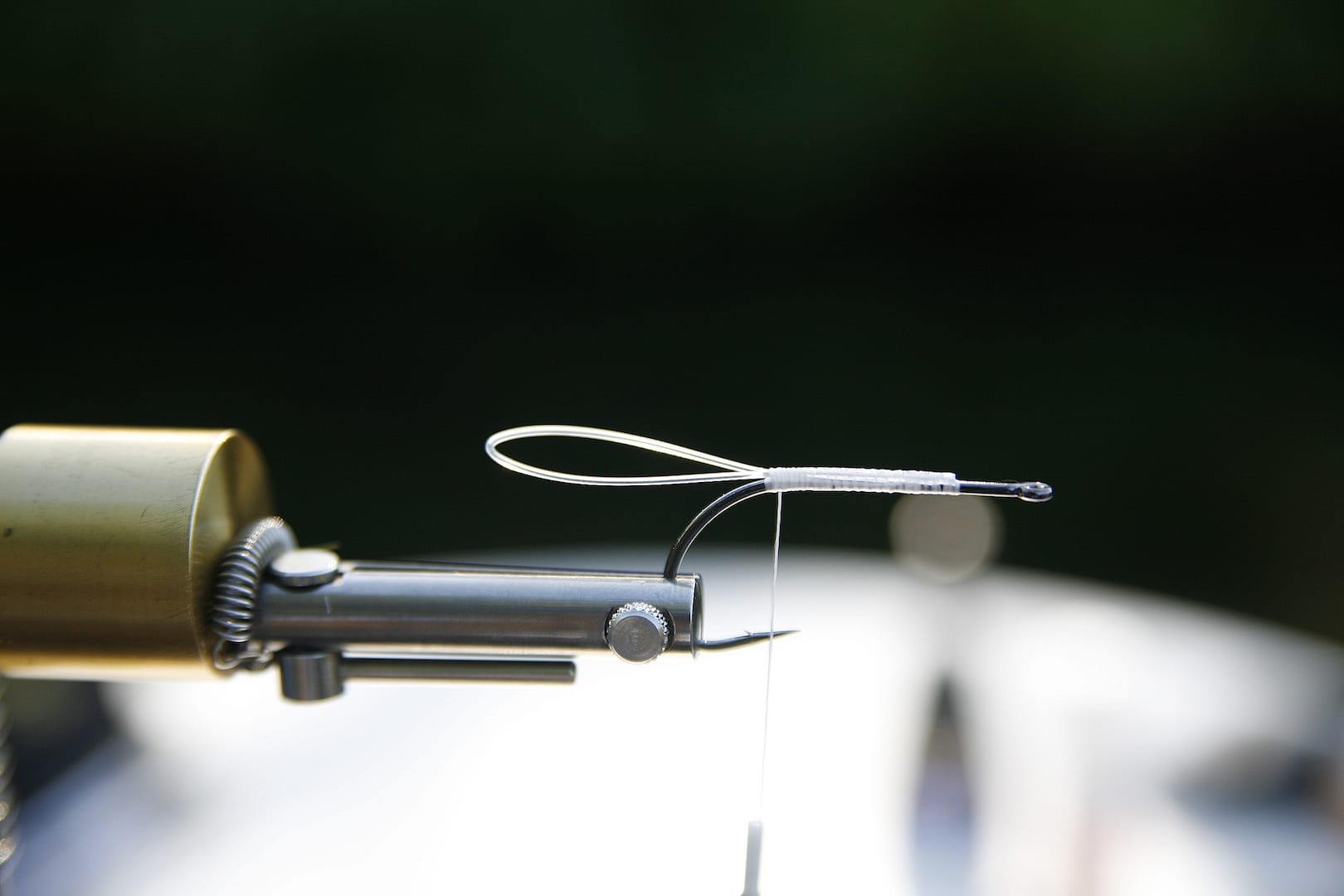
Step 2:
On this basic winding a loop is tied with the 70lb FC. The FC loop prevents the tail from wrapping around the bend of the hook. Cover properly with superglue!

Step 3:
A medium-length synthetic fibre material with as much volume as possible is attached to the top of the hook.
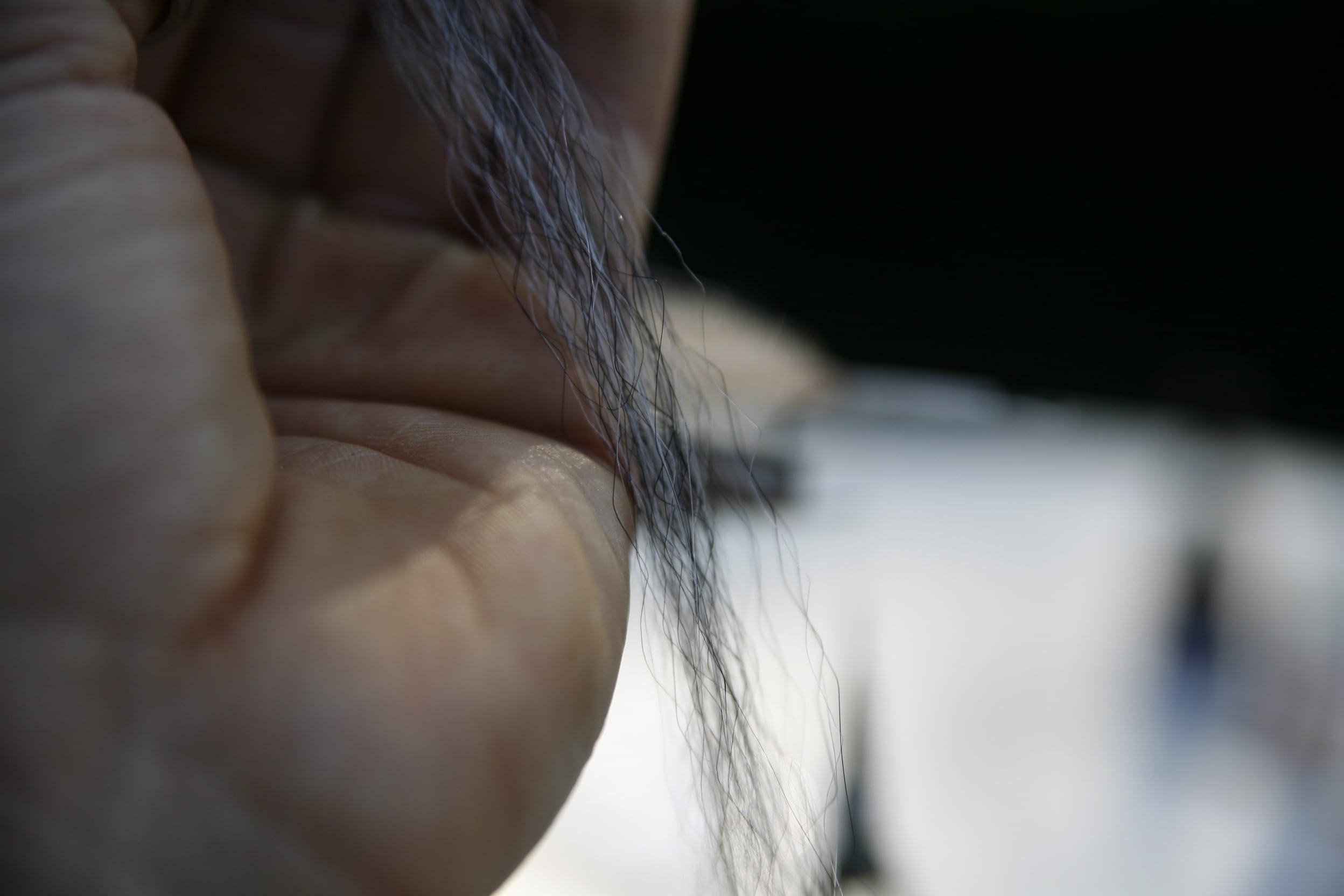
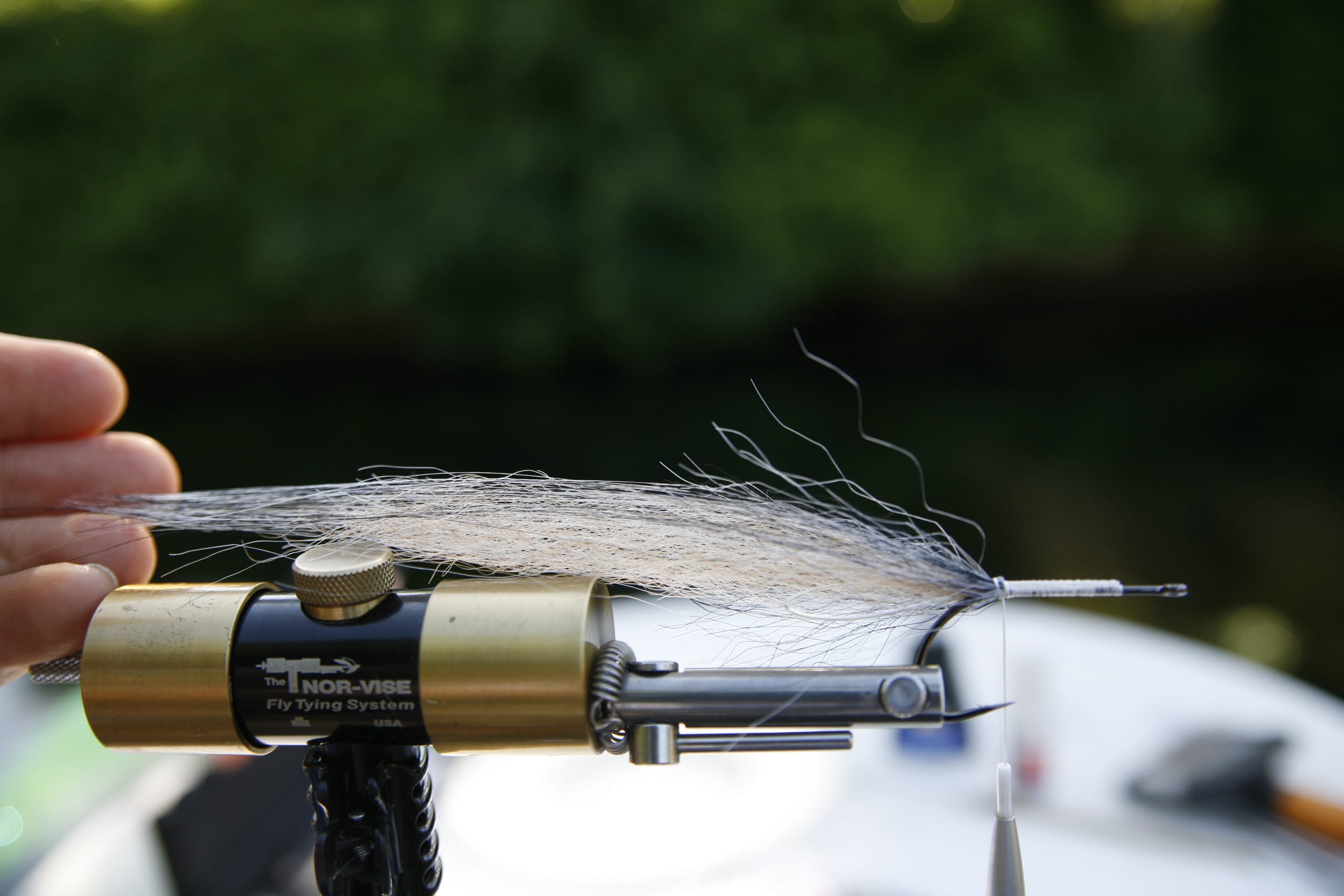
Step 4:
Take a little bit of SoliTip volume fibre and straighten 3/4 of the fibre with a hair straightener applying low heat. The hair is firmly attached to the base material but should overlap significantly beyond the material from step 3.
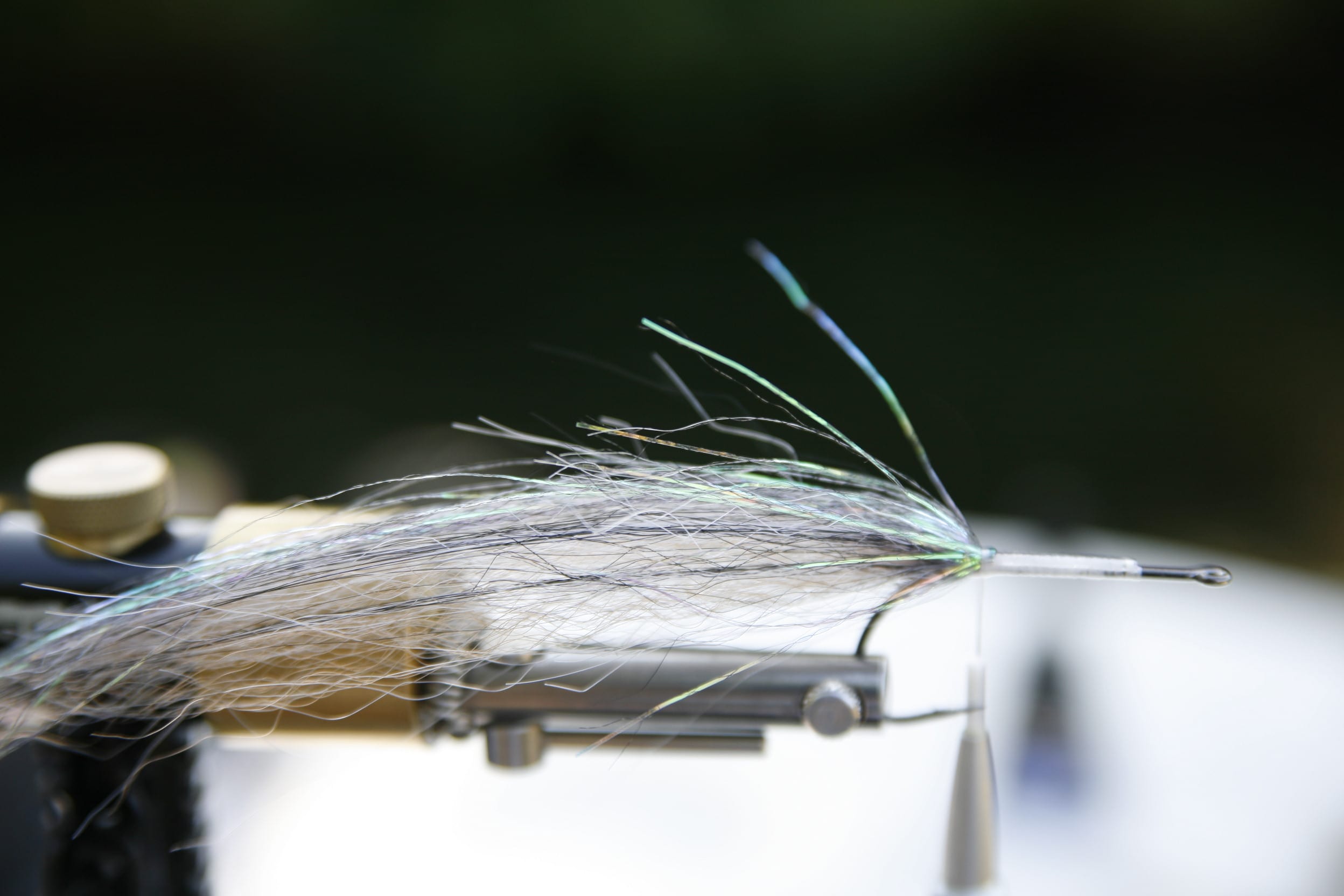
Step 5:
Add a few threads with the long glitter material on top.
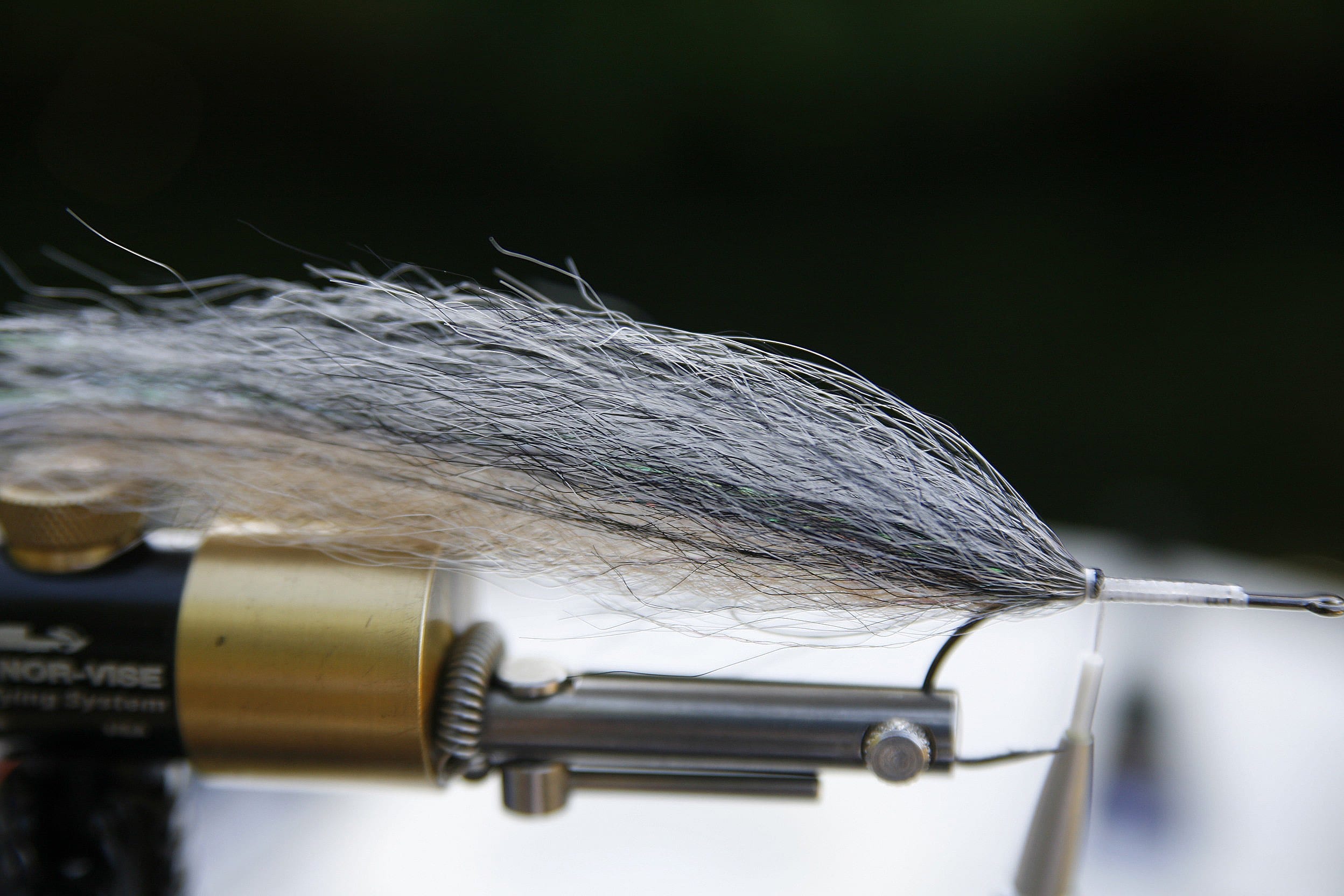
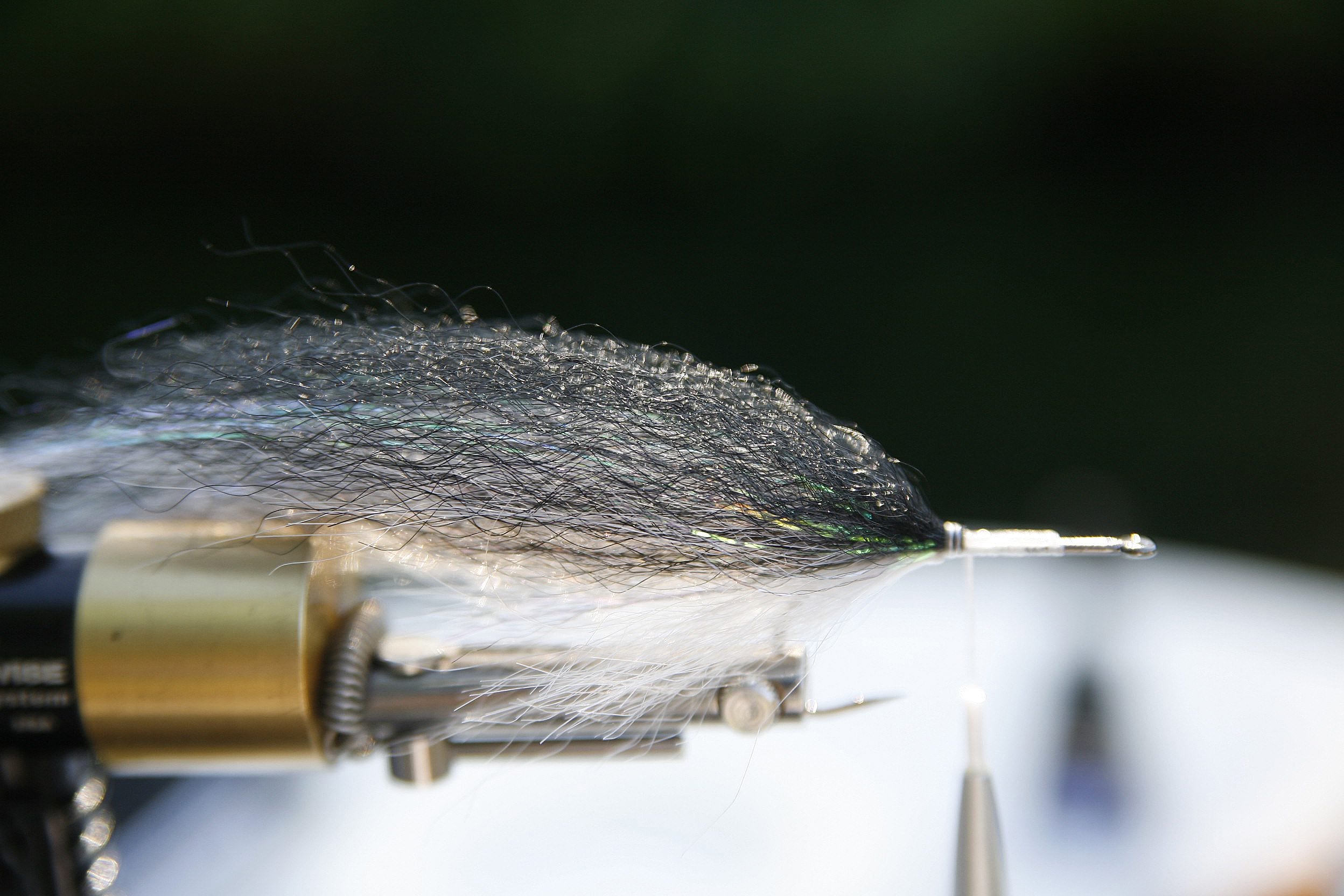
Step 6:
Several layers of volume fibre in different colour gradations are placed one after the other on the hook and fixed. In between some threads of glittering material. These steps form the long body. Fix with superglue every now and then, this makes the fly more durable and prevents it from slipping. Do not tie the material too tightly, rather a little more sparingly, less is more.

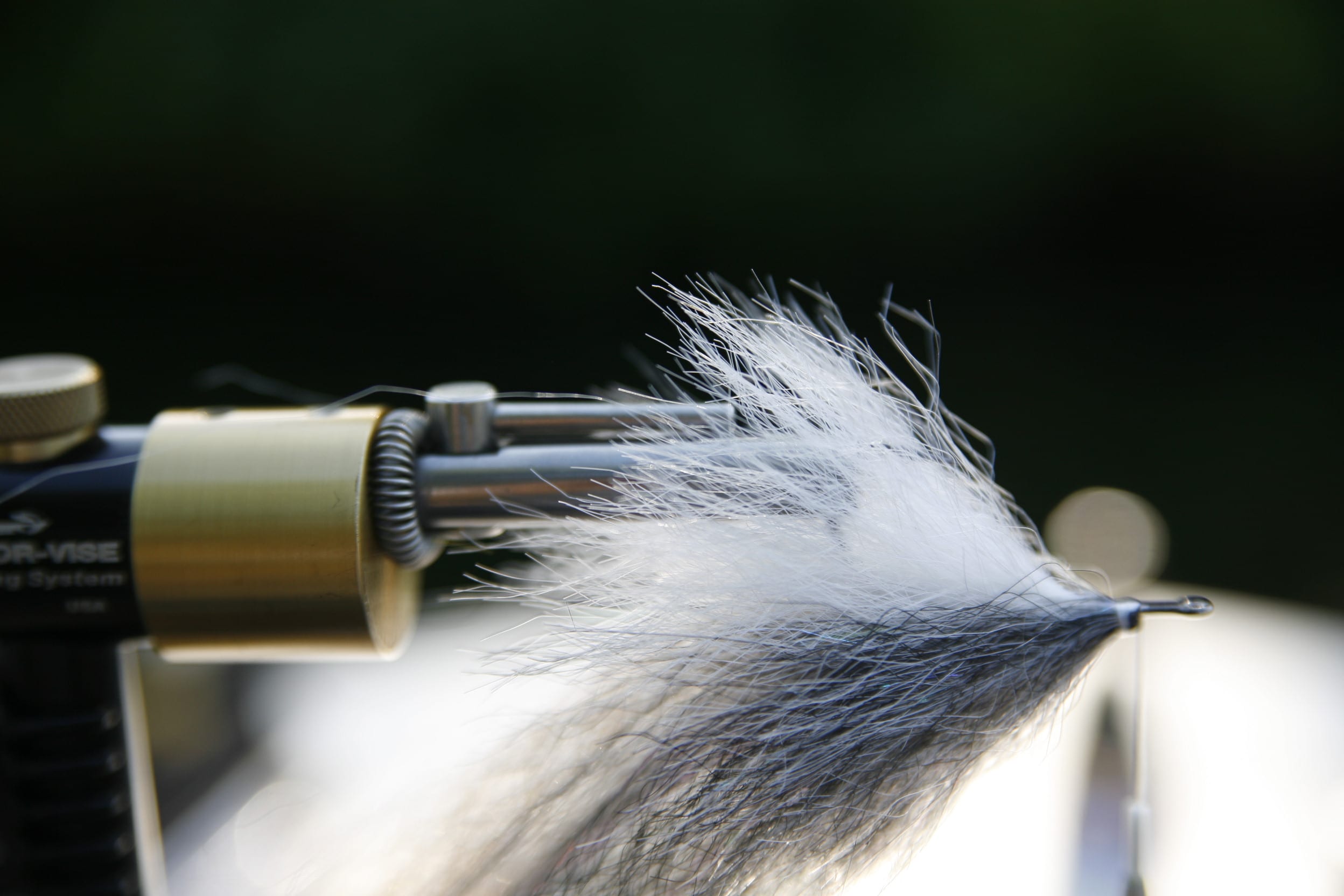
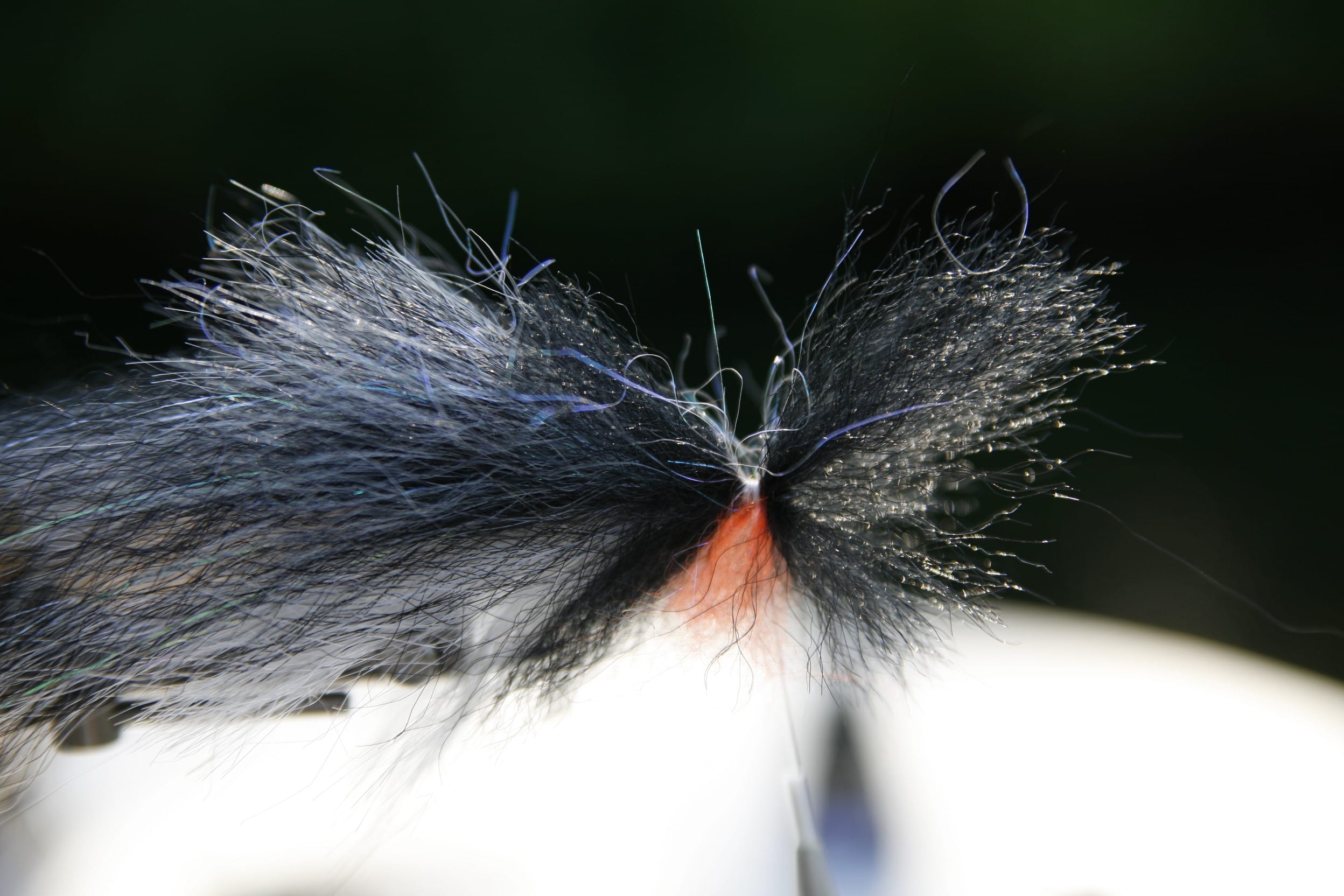
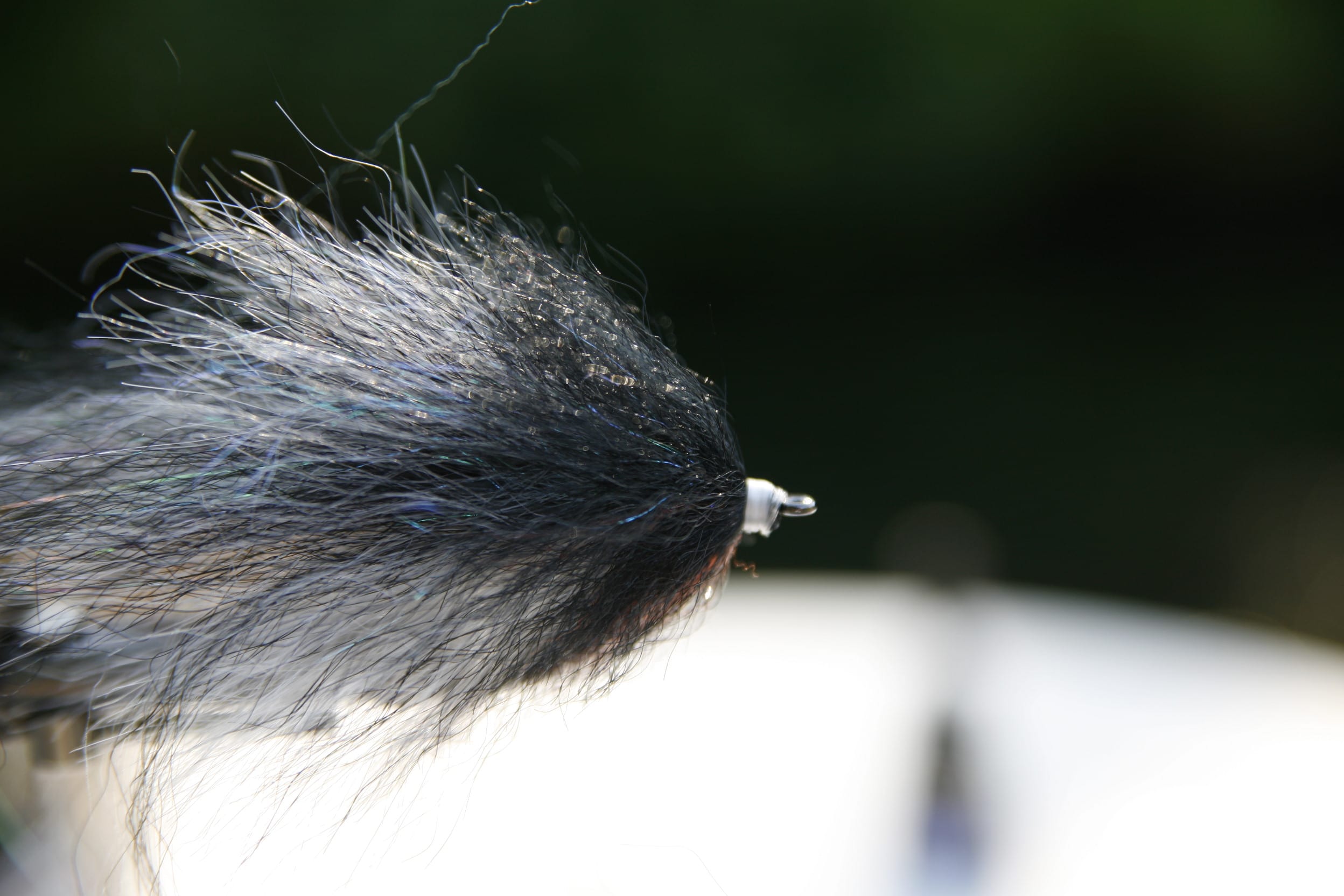
Step 7:
The front body is formed. Short pieces of synthetic material are included. Alternating top and bottom. Ideally light on the belly, darker on the back or upper side. This body contrast is desired, but not a must. Tie the tufts up to the front of the eye, tie in a short glitter dub. Rather restrained.
Distribute the last layer evenly behind the eye, above and below. Place the thread forward one behind the other and then pull the synthetic hair forward to the back and tie it up. A short shaft forms, which is fixed with the thread.
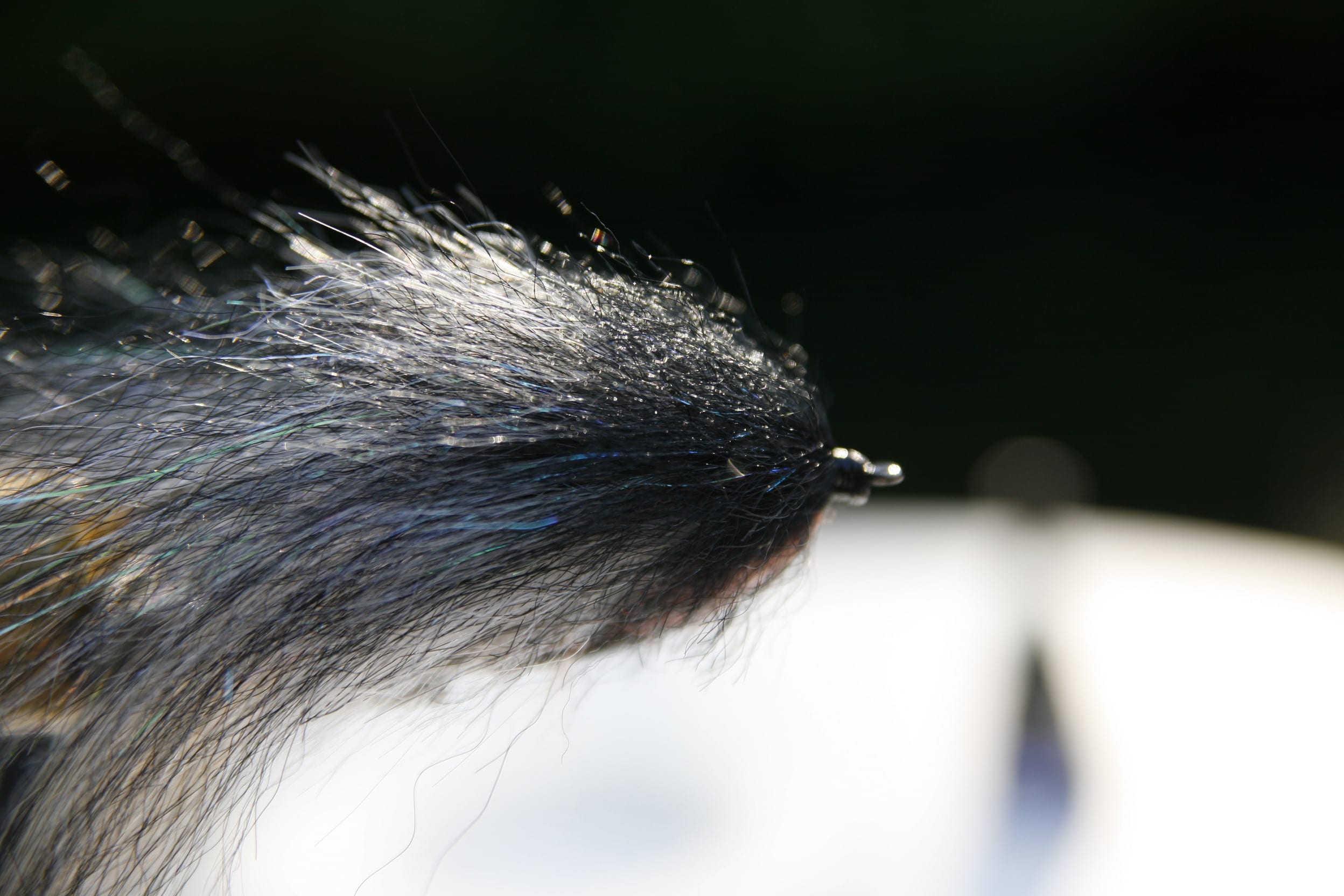
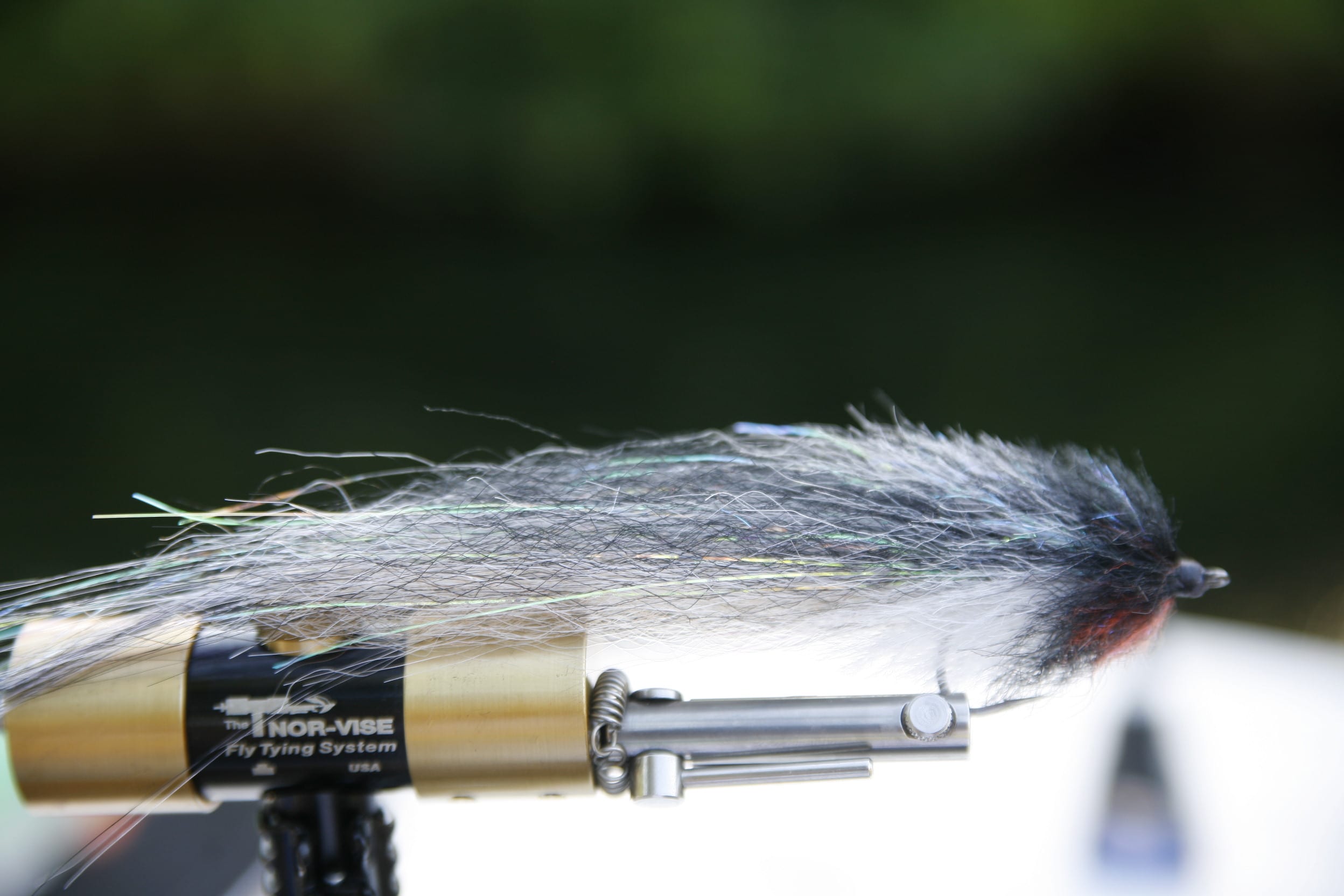
Step 8:
Tying it up, finishing knots and possibly adding light colouring. Fix again with superglue!
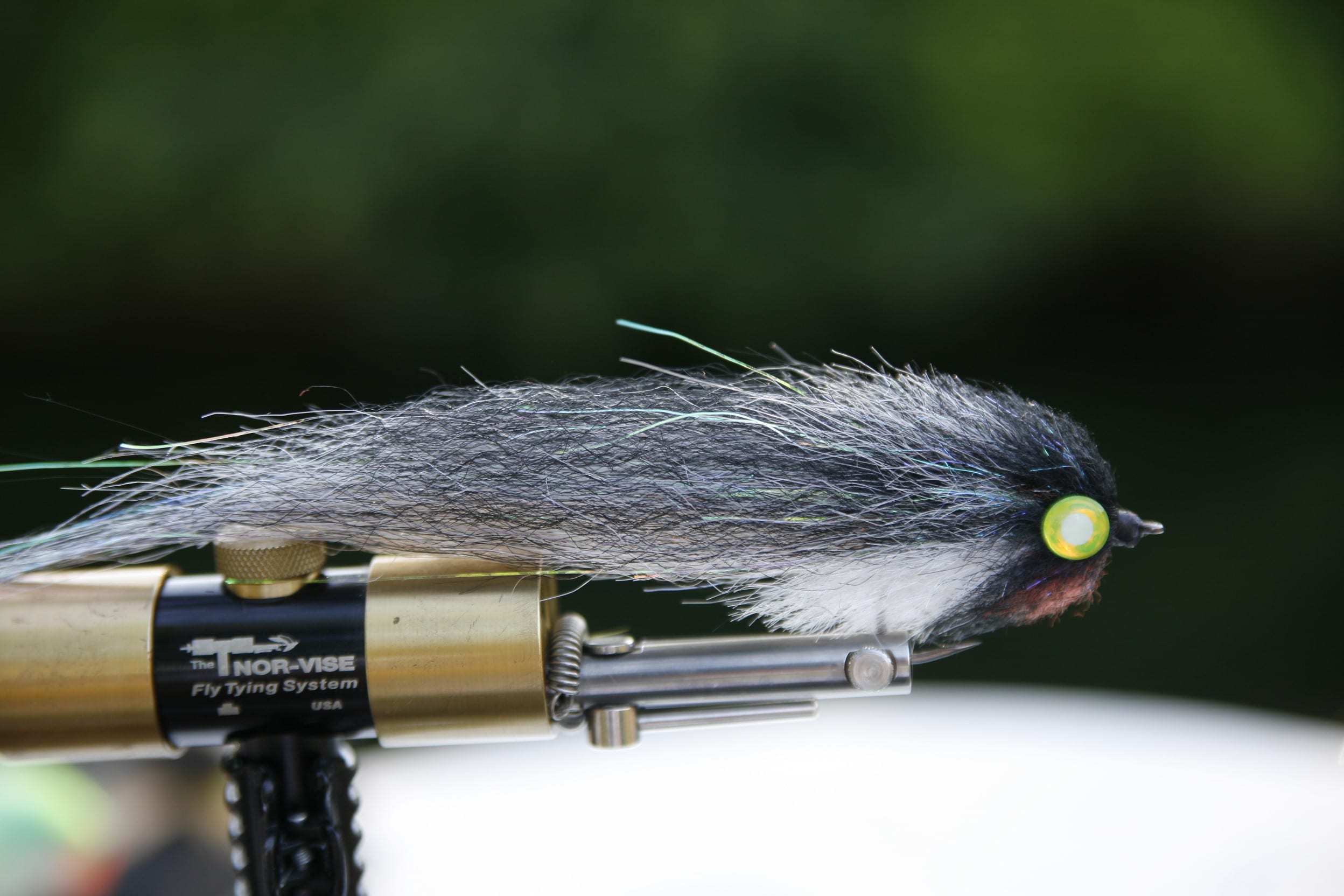
Step 9:
As a final step, the eyes are attached on both sides. I prefer super glue gel.
The pattern can be dyed with coloured pencils. Stripes, dots, according to your own taste. For the eyes I highly recommend the ones from Flydressing. They are not only highly UV active, but also flash when a ray of sunlight hits the artificial eyes. A very welcome effect!
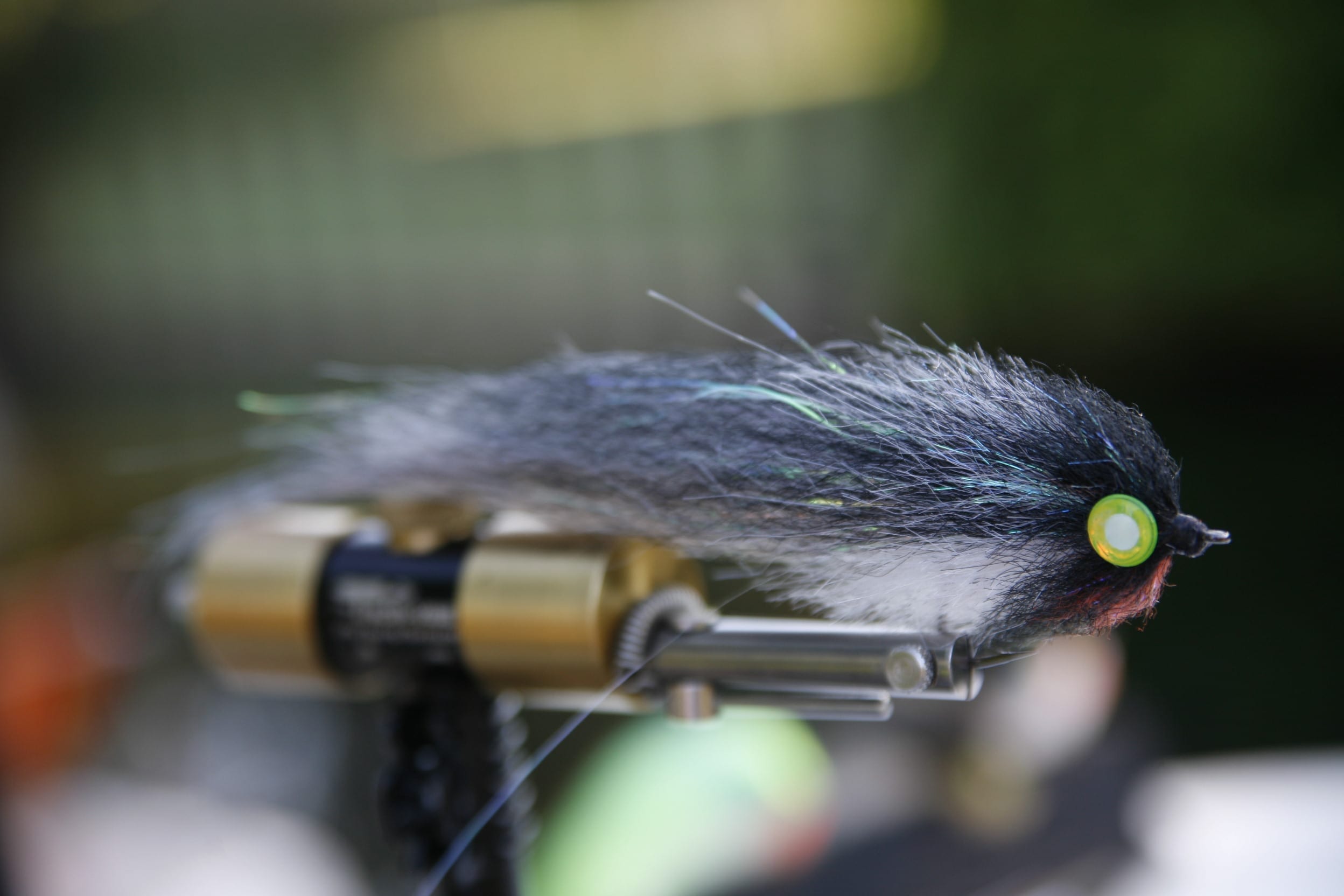
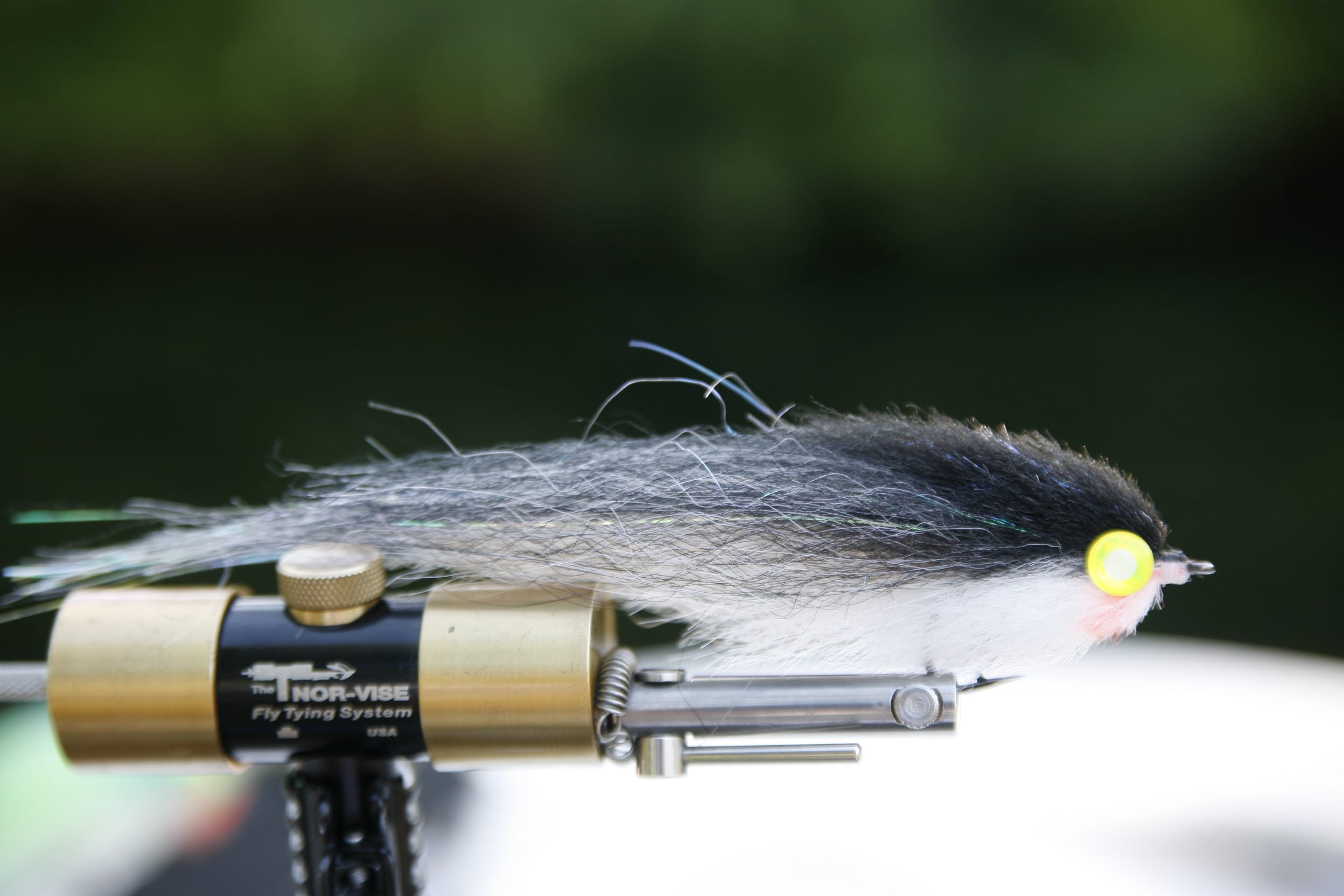
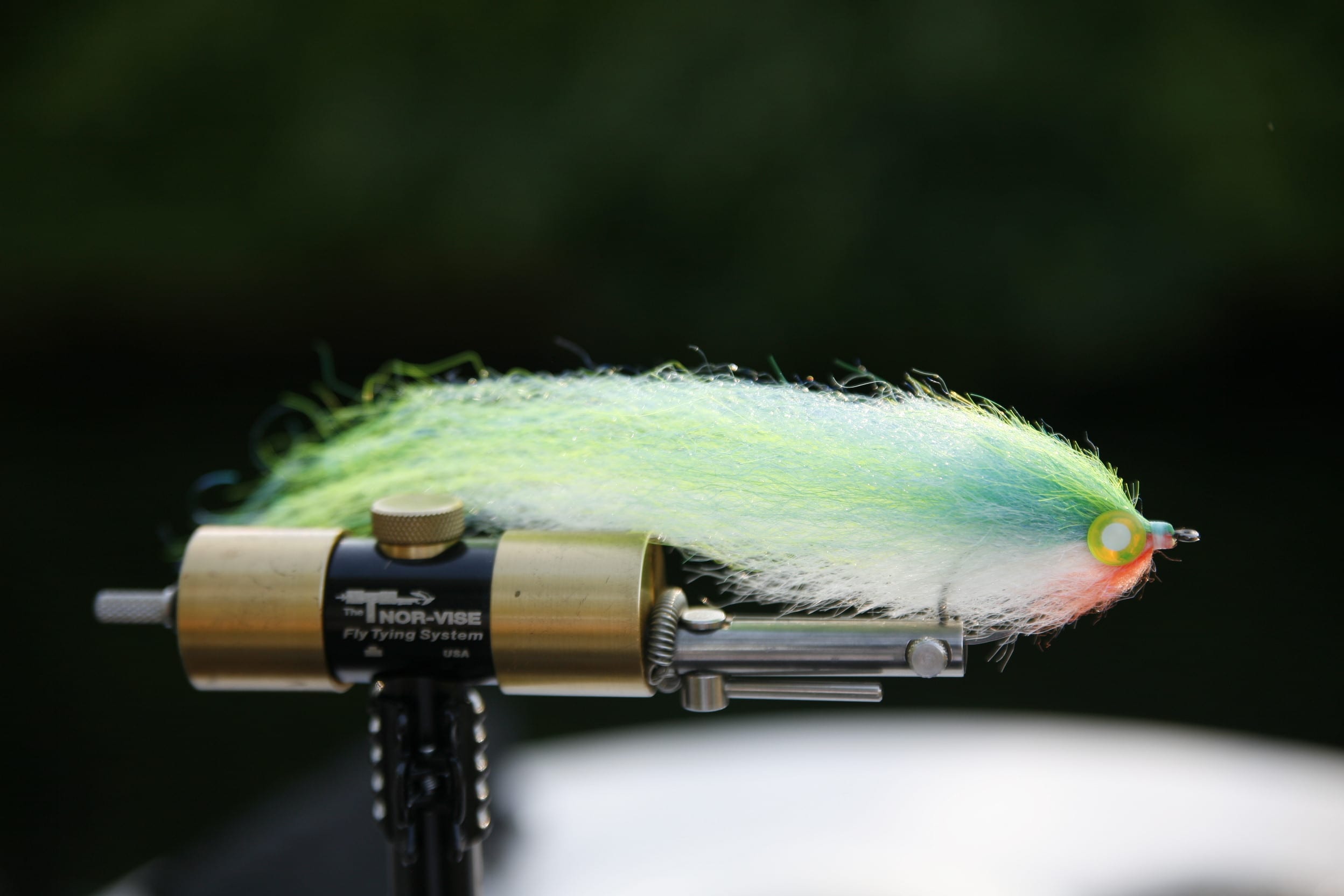
Different colour variations.
Depending on whether you use e.g. Dyckers Fiebers in hard or soft, the pike fly jerks or wiggles when stripped in. Overall the pattern should not be longer than 10” (25 cm), rather between 6” (15cm) and 8” (20cm). The short single hook can lead to missed takes. Usually the predators swallow the fly completely or attack the head with the shiny and glittering eyes.

This pike fly pattern is easy to tie, combines some tying techniques that can be used in many ways and is not bound to the material list. Experimenting desired!
I fish the pike fly almost exclusively on sink lines (S3 to S7) or fast sinking intermediate lines. Very catchy for pike, perch and pike-perch, easy to throw and ultra durable.
Have fun tying and experimenting.
Check out more of Rainer’s work here:
FAQs: Pike Flies
What is a pike fly pattern?
A pike fly pattern is an artificial fly designed specifically for fly fishing for northern pike. These flies often imitate the appearance and movement of prey that pike commonly feed on, such as smaller fish or large aquatic insects.
What are the key features of effective pike fly patterns?
Successful pike fly patterns typically have a large and bulky profile, often incorporating materials like rabbit fur, synthetic fibers, and flash to create a lifelike appearance. Bright colors, such as chartreuse, orange, and white, are popular choices to attract the attention of pike in various water conditions.
When is the best time to use pike fly patterns?
Pike are active predators throughout the year, but fly fishing for them can be particularly productive during the spring and fall when they are in shallower waters. Early morning and late afternoon sessions are often fruitful, and pike tend to be more active in cooler temperatures.
What type of retrieve is effective for pike fly fishing?
The retrieve for pike fly fishing often involves a combination of short, quick strips, pauses, and occasional erratic movements. Pike are known for their aggressive strikes, and varying the retrieve can trigger their predatory instincts.
What fly rod setup is recommended for pike fly fishing?
A sturdy fly rod in the 8 to 10 weight range is commonly used for pike fly fishing. A weight-forward floating or intermediate fly line is suitable, and leaders should be constructed with heavy-duty tippets to withstand the pike’s sharp teeth. Using wire leaders is also advisable to prevent bite-offs.

